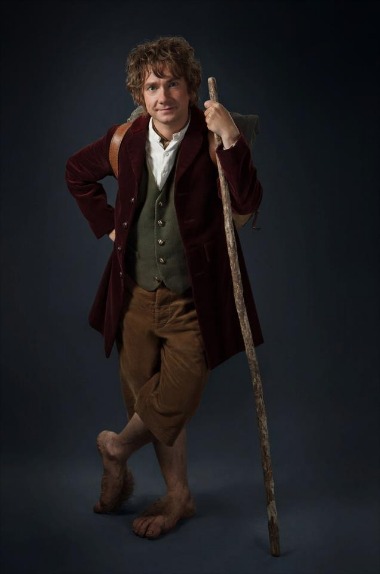The Hobbit, In Fact A Pretty Expected Journey
By Victoria Pietrus in Arts & Entertainment on Dec 17, 2012 4:40PM

Martin Freeman as Bilbo Baggins
With Peter Jackson’s fourth film set in the universe created by J.R.R. Tolkein, The Hobbit: An Unexpected Journey, the math simply does not add up. This film serves as part one of a three-part series, which means the 300-page book will be portrayed throughout nine hours of film. In comparison, Fellowship of the Ring was one three-hour film, and contained the events of a book that was over 500 pages. It is obvious that Jackson did not prioritize anything resembling a respectable storytelling pace, but instead was reliant on an implied sentimentality that the audience would have for these characters to build and sustain their engagement.
The Hobbit tells the story of how the wizard Gandalf (Ian McKellan) persuades the hobbit Bilbo Baggins (Martin Freeman) into joining thirteen displaced dwarves on their journey to reclaim their home mountain from a greedy, gold-loving dragon named Smaug. A noticeable amount of careful detail went into the eccentric, bearded, and overweight appearance of these dwarves, but it is only their leader, Thorin (Richard Armitage), that audiences really get to know. His tough-as-nails attitude is a response to his homeland being pillaged and stolen and his grandfather being murdered by a repugnant orc leader named Azog. Too many characters are introduced too quickly (which seems incredible given the slow, meandering scenes of dwarf eating and singing that monopolize the first third of the movie), and this dwarf pack lacks the complexity viewers appreciated from Viggo Mortensen, the charming cantankerousness from dwarf John Rhys-Davis, the beautiful fierceness of Orlando Bloom, or the freshness of quirk found from the four hungry hobbits in previous films.
Nonetheless, Jackson predictably delivers with suspenseful and expertly choreographed fight scenes, lush panoramic imagery, and the iconic moody Howard Shore music. It is impossible not to admire the intuitive camera work, outrageous Middle Earth garb, and the return of past characters we’ve already gotten to know very well. Returning cast includes Elijah Wood as Frodo Baggins, Hugo Weaving as the elf leader Elrond, Cate Blanchett as royal elf Galadriel, Christopher Lee as Saruman, and most delectably Andy Serkis as Gollum. One can never get enough of this big-eyed, endearing creature with two unpredictable personalities. The movie’s best scene shows Gollum and Bilbo in a “riddle off” that followed not long after Bilbo by chance discovered the epic and all-powerful ring that Gollum accidentally discarded.
Also available and notable for fans interested in innovative film techniques, there is the chance to view the film in 3-D shot at 48 frames per second. Much has been said both commending the clarity, high-resolution appearance and conversely critiquing the overwrought detail that distracts and disarms.
The Hobbit is a decent enough holiday movie for families; it wants for anything truly original and has many flat characters (though not for lack of a talented cast). It is undoubtedly a must-see for fans, and it will be interesting to see what lessons will be learned for rounds two and three of this story.